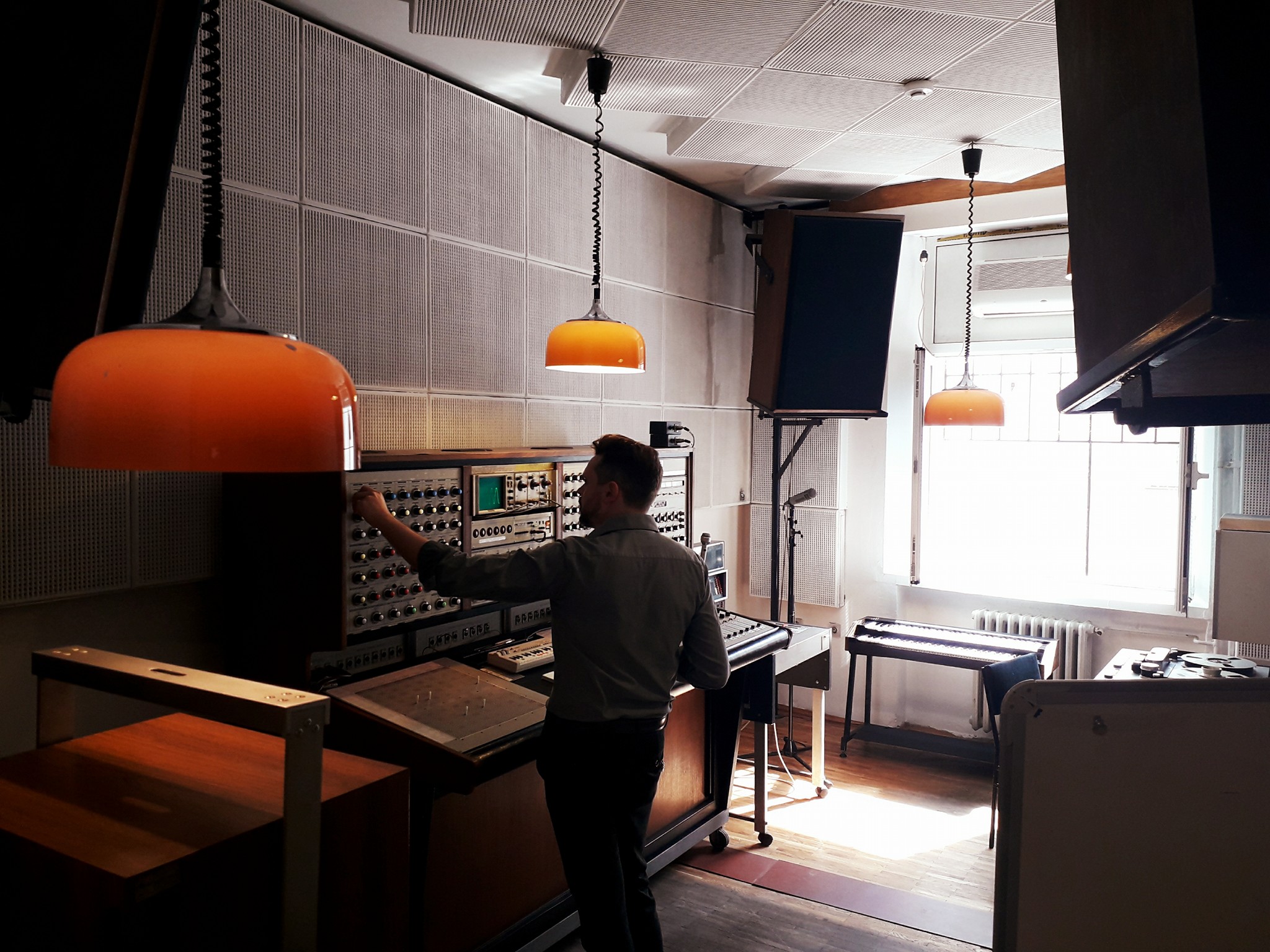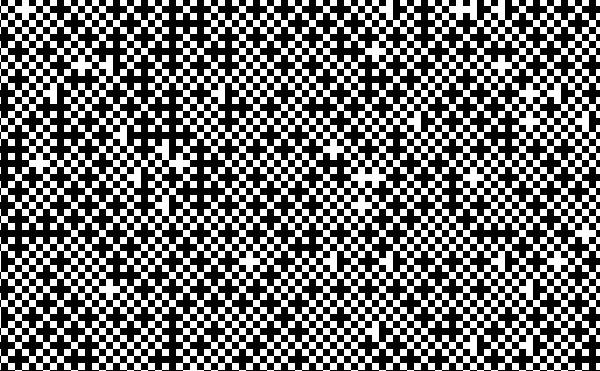Paul Oomen at Electronic Studio of Radio Belgrade (2018-2020)
Exploring Spatial Waveforms with the Historical Synthi100 Analogue Modular System

In 2018, Paul Oomen was Artist-In-Residence at the Electronic Studio of Radio Belgrade and conducted experiments using the EMS Synthi100 analogue synthesizer. These experiments concern the acoustic phenomena of sound that evoke the perception of its movement through space.
Since his first visit to the electronic studio in Belgrade in April 2018, Oomen has continued to work independently with this material and extended his findings on the subject.
In this collaborative feature, you will be able to hear the full radio broadcast (in Serbian)
from March 2020
for the Serbian National Radio, presented by Svetlana Maraš, artistic director of Radio Belgrade’s Electronic Studio, followed by the english transcipt of the podcast with the integrated soundwork excerpts.
Podcast
Originally Published by Radio Belgrade
Editor and Presenter: Svetlana Maraš
<english transcript>
Paul Oomen is the founder of 4DSOUND - a company that develops spatial sound technology. Generally speaking spatial sound allows, by the use of software and hardware to reproduce experiences of sound as if they don’t come from speakers but are actually happening among and around the listeners.
Besides very basic applications that we know from cinema and entertainment, spatial sound is a very young and emerging field of development, and many possible applications of the technology are still in an experimental stage. For this reason, Paul Oomen founded in 2015 the Spatial Sound Institute in Budapest, Hungary. The Spatial Sound Institute works with composers, artists, architects, scientists, therapists, medics and many others on different experimental applications in society using spatial sound technology. More specifically, the Spatial Sound Institute conducts study into the effects of spatial sound on the listener. Spatial sound may induce higher awareness of perception, as spatial information is very delicate and therefore demanding from the listener to become more conscious of what and how one hears. At the same time its effects are deeply rooted in our physiology and there is an instinctive, often unconscious response from the body. Spatial sound as such mediates between our physical system and its environment, which has implications on our functioning and our health.
When Paul Oomen started developing 4DSOUND, he was deeply inspired by the work of Nikola Tesla, by his inventions and even more so his writings about the nature of energy and movement. Paul Oomen related Tesla’s writings to an experience of sound that he had always been seeking after. He wanted to unleash the potential movements that one can observe in sound and make these movements explicitly audible in space. Paul Oomen and his team started working on software and hardware that would allow to achieve such dimensions of a sound experience. One of the first steps he started with was to define a theory of movement for music composition, based on four archetypes of energetic forms described by Tesla. Static or potential energy relating to stasis or stillness of motion; Kinetic energy relating to linear energy distribution, or movements that transfer from one point to another; Rotating energy, relating to cyclical movements; and Noise or random energy, relating to states of indeterminate movement. These archetypes became the basis for different modules Paul Oomen and his team developed to generate particular audio distributions in space, and that have remained central in the 4DSOUND software up until today.
When we observe a sound moving through space, the information we receive is stored within the acoustical waves - about how and where the sound is in space, as well as information about the environment and about ourselves, the listeners within the environment.
In 2018 Paul Oomen was invited for a residency at the Electronic Studio of Serbian National Radio working on the Synthi100 and he decided to work on an experiment to try and encode spatial information in very basic waveforms, using exclusively mono sound and using only very basic operations on the sound that analogue synthesis would allow.
The result is a collection of ‘spatial waveforms’, basic forms of sounds that express spatial movements. They are not simulations of a spatial sound experience, although they may evoke an illusion of sound actually moving in the physical space you are in, when listened to under the right circumstances. Rather, we perceive space within the sound itself. Sound becomes a looking glass through which we observe space, and movements within space are encoded by modulation and interference of waves. All of the sounds have been created and recorded by Paul Oomen with the historical Synthi100 analogue modular system at the Electronic Studio in Belgrade.
In a most simple example, the amplitude of a wave is modulated by another wave, causing the perception of the sound to change distance to or from the listener. Another example is the perceived changes of direction within a sound, caused by the interference of two identical waves with a small time difference.
In the following example, we hear a waveform expressing a single lateral curve. The wave moves in a line going back and forth with a slight bend upwards when coming towards, and down when moving away from the listener.
Single Lateral Curve
In the next example, the phase of a ramp wave is modulated by another ramp wave, causing an interference with an identical wave which is not modulated. Within the sound we hear a circular movement with cycles getting larger and smaller, in doing so forming a contracting and expanding spiral.
Expanding Contracting Spiral
In another example one ramp wave modulates two identical waves. For one wave is modulated the frequency and amplitude, and for the other wave the amplitude only. The difference in the modulation of the two waves creates interference. We hear in the sound a movement of a double lateral spiral moving back and forth in a line. For one of the spirals the cycles get smaller and smaller towards both ends of the line, and for the other spiral the cycles remain constant.
Double Lateral Spiral
In the next example, we hear a similar movement but now the spiral is moving in a line upwards and downwards instead of lateral. The verticality is caused by the modulating wave also filtering both waves, leading to a gradual attenuation of higher and lower frequencies present in the sound. As a result, the two spirals seem to synchronize as they climb up, and one of the spirals seems to make smaller and smaller cycles as it falls down, while the other stays constant.
Single Vertical Spiral
Within sound, says Paul Oomen, we are thus able to contain information that we observe as a space, or movements in space, and we witness the analogy with our perception of the physical space we live in. Paul Oomen considers sound therefore as holo-fractalic. It is holographic because it stores a reproduction of the complete 3-dimensional scenery within its wave interference pattern. And in reverse, it can thus project an image which retains the perception of depth, directionality and dimensionality of the original scene. It is fractalic, as within each smaller wave we find the reproduction of the larger wave, and encoding dimensional information therefore means to modulate waves which then modulate themselves, for each dimension each time a modulation one level deeper.
The holo-fractalic nature of sound is demonstrated in the following excerpt of the work ECLIPS by Paul Oomen, inspired after his work in 2018 with spatial waveforms at the Electronic Studio in Belgrade. The work is conceived by a single wave interference with a fixed time difference, and the frequency of one of the waves is modulated. Using digital techniques, this process magnified in time 3000x. In the excerpt to follow we experience ¼ of a wave cycle interference stretched over the course of 12.5 minutes, very slowly and in great detail. As a result we hear ever more spirals opening up within the sound. Nothing in this work is composed, all the movements that are heard are naturally resulting from the wave interference. The sound shows a space of cosmic proportions, something of a map of the universe where energy gravitates, centres and forms in harmonic constellations, and then collapses and abandons the form.
ECLIPS has been produced with basic recorded material of the Synthi100 and afterwards digitally processed and mastered. We hear an excerpt from the total work of 1 hour and 40 minutes.
ECLIPS
If sound can be a looking glass to observe space, and to witness the very nature of our own perception of space, it may also be able to project information of higher spatial dimensions, the realm of potential that lies beyond the 3-dimensional material world, says Paul Oomen.
In 1900 Nikola Tesla patented a system of wireless transmission of energy. He describes his device as a magnifying transmitter, because at the receiver he observed a much greater energy to arrive than the transmitter was taking up. Tesla explains the phenomena to result from radiation of so-called scalar waves. He measures the resonance of scalar waves at 12 Hz, about 1.5x higher than the resonance frequency of electromagnetic radiation. Tesla concluded that scalar waves would thus travel 1.5x faster than light. They would propagate in a dimension out of spacetime, moving through a field of potentials.
Although the existence of scalar waves has been predicted by scientists such as Maxwell and Kelvin, the phenomena has never been experimentally observed. Tesla’s promise of wireless energy transmission remains an unresolved potential up until today,
Nevertheless, Paul Oomen suggests that the structure of scalar waves are also reflected in acoustical waves, and we can hear what they would ‘sound like’. If we consider the total energy within a sound at one instance in time and extrapolate the potential resonance of each harmonic phase, we observe scalar waves moving through the field of potential energy states of the sound.
In the work SCALAR, we listen to an exploration of the quanta of potential energy that are present within a tone, tuned a higher octave of 12 Hz, the resonance mentioned by Nikola Tesla. The work is realised by tuning and scaling multiple filters modulating the timbre of one single wave.
Performed live by Paul Oomen at the Electronic Studio of the Serbian National Radio using the Synthi100 and digital audio processing in real-time.
SCALAR
© 2020 Paul Oomen. Electronic Studio Radio Belgrade. All rights reserved.
Related:

 Listening to Space (2016) [PUBLICATIONS]
Listening to Space (2016) [PUBLICATIONS]